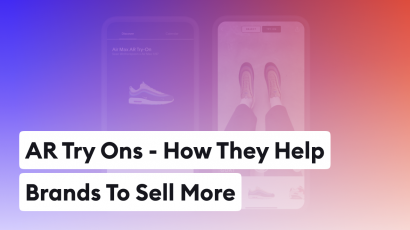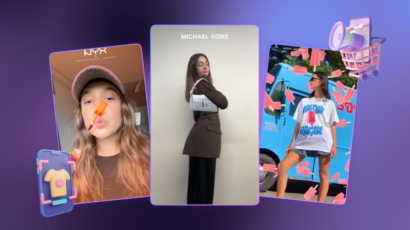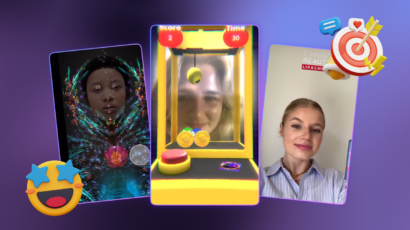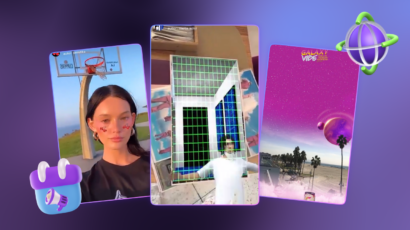The pandemic period proved to be complicated for many retail businesses in 2020. Due to quarantine, consumers could no longer walk to stores which, let’s say, led to a 20% drop in overall sales for retailers on Black Friday. Contradictory, e-commerce sales rose by hundreds of millions of dollars instantly. Even one element made this whole process a total success for retailers. AR (augmented reality), which became an absolute favorite tool for brands, played a chief role in the market. Especially virtual try-on, which is no longer a luxury, has made the try-before-you-buy experiences and dramatically increased brand loyalty, customer engagement, and sales.
What is an AR Try-on?
The concept of try on products before you buy has been present for some time now, but about 15-20 years ago, it was a futuristic dream and an inspiration for movies. Today any person can use the ability to see how branded clothes fit themselves virtually, without going out from home, in real-time via their phones, laptops, or other devices.
In short, AR virtual try-on is a technology allowing consumers to see how clothes, jewelry, shoes, and make-up would look on them by only using the mobile camera. This tool does bring the purchasing process to the next level.
What are the Benefits of AR Try-on?
The key benefit that an AR try-on has is seeing the product and trying it before purchasing from any location without showing up in the store.
It saves time for the customer, who now can fit any jewelry or clothes peacefully at home and buy them whenever they are ready. For consumers, AR try-on allows them to take pictures and share them with friends. From the perspective of brand marketing, it brings engagement and interest to the product.
Keep in mind that more than 71% of the buyers want to buy from brands offering AR, and brands that use this technology have a 90% of engagement rate.
AR Clothes Try-on
With the help of this technology, clothing brands can create exciting, interactive online shopping experiences and increase e-commerce conversion rates by up to 40%. As a brand, you give your customer the freedom to choose from various options and customize products.
For example, the clothing brand Farftech partnered with Snapchat and allowed users to fit a few jackets with the try-on tool. With the voice command, the front-facing camera shows a suggested item on the person’s body, and the customer can purchase the favorite jacket directly from Snapchat.

The technology has not fully developed yet. From today’s perspective, most try-on solutions only look realistic on any body type. So, the AR clothes try-on has a long road ahead.
AR Shoes Try-on
Everything began when Snapchat introduced AR lenses incorporating a foot track. Since then, many footwear brands have started experimenting with AR. This technology helps brands fully show their products from any angle.

AR Accessories Try-on
AR jewelry try-on technology is one of the most hyper-realistic tools that accurately depict the looks of size, color, and shape. With the help of AR try-on, the consumer can create their style and then confidently purchase those items. Trying out jewelry is so realistic that consumers can create memorable moments and share them on social media, which definitely increases the brand’s awareness.
Luxury watch company Baume&Mercier has made the virtual try-on experience. They created models for several different wrist sizes, and that’s why the virtual watches were so realistic. The brand decided to add this tool to its website which is a big plus. It is accessible and easy for any, who decides to visit the brand’s website.

Using AR try-on technology, customers can have confidence and be more informed about purchasing decisions. It helps brands stand out from others and be at the top in online shopping.







